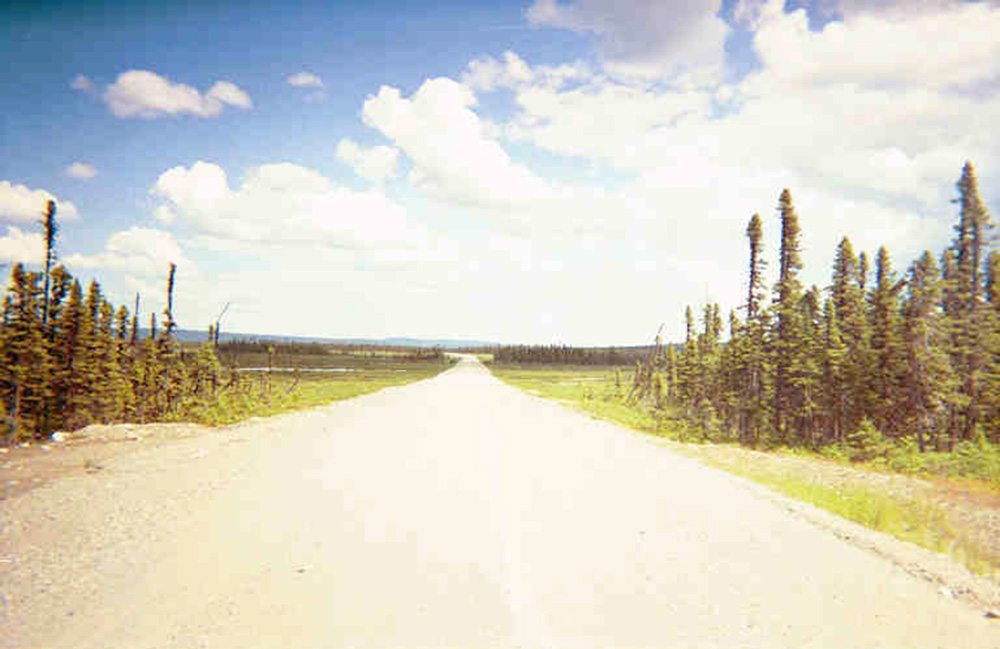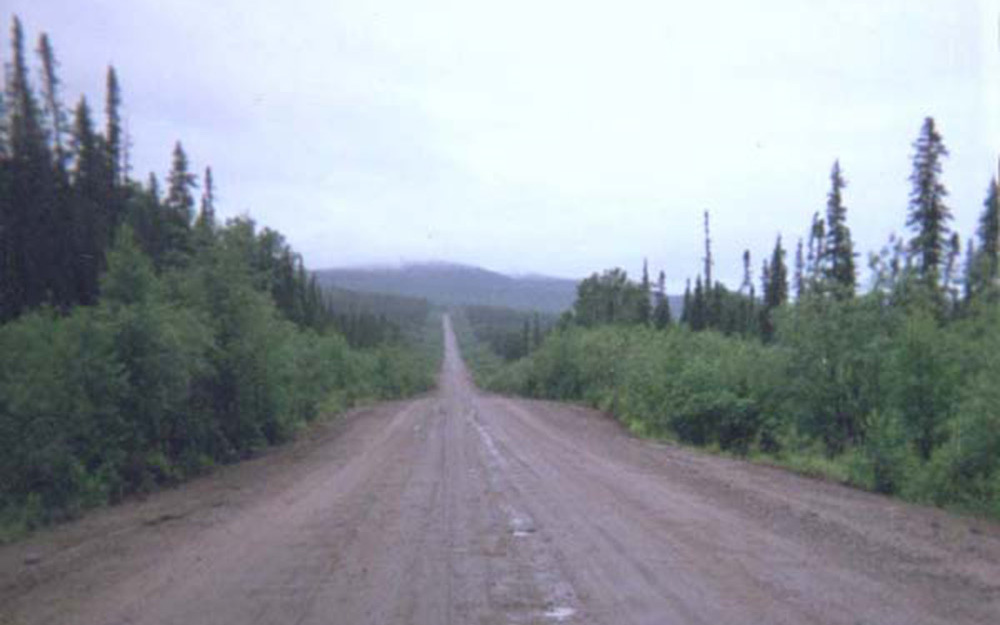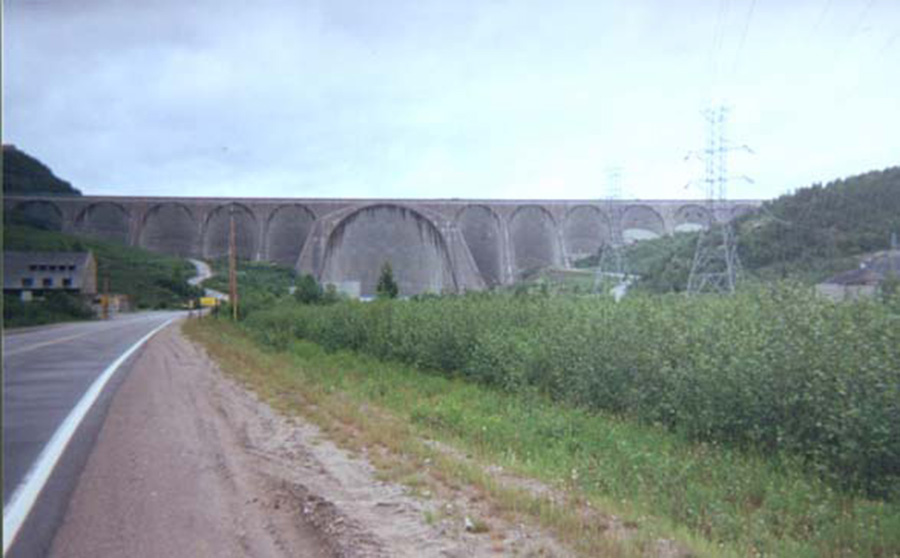At a cemetery just outside Hopkinsville, Kentucky, waiting for the world to change. It’s 1:29 pm, and if I look through my welding goggles, our bright green sun is slowly being eaten.
I was inspired to pull in because I saw the two bikes, but now I see there are people everywhere among the gravestones and trees.
1:43 pm
There are fields on all sides, though I’m not sure of what.
The bite gets bigger, but I am reluctant to stare — I don’t think my goggles are strong enough.
Last time I watched a solar eclipse, I used a pinhole projection and traced the shadows on a page. That was only a partial eclipse, though — there hasn’t been a total eclipse in the U.S. since 1979. I didn’t know that until the other day; I’d almost taken this one for granted.
Nothing has changed yet, down here.
Totality is scheduled for 2:25 pm, EST.
2:00 pm
The sun looks like a green cartoon crescent moon.
One of the bikers shows me how it looks through a proper 12 welding glass — mine is less, still too bright. But I have two lenses, so when I pull them out and stack them together, now I’ve got something.
Lenses off, the light is weird, the grass seems supersaturated, the world on Instagram.
2:10
Unreal light now, uncanny shadows. The whole world seems wrong.
The guy from Connecticut lets me look through the welding plate and the crescent looks bright, sharp and glorious.
Totality
Someone spots the crescents, and calls out. Every dapple of light fallen through the trees has turned into a pinhole projection of the sliver of the sun. It is unexpected and crazy to see, suddenly we are all running around and looking at the ground and exclaiming, finding glowing crescents everywhere, hundreds, thousands waving on the grass, the pavement, the hoods of cars. It’s as if the laws of light no longer apply and have whimsically been rewritten by a wry god. At least, the laws as us monkeys understand them.
It gets darker. It gets colder. Everything gets weirder.
When totality comes, it comes on an exponential curve, not instant but nearly, with a silent “pop.” Darker – darker – DARKER – GONE.
The sun is gone and there is a ring in the sky, a halo, and it is not the color of the sun. It is cold, blueish, it seems to be throwing out feathers, faint rays of a holy aura — it’s hard to tell.
There are two stars (or planets?) in the sky now, on opposite sides, roughly 2/3 of the way up from the horizon, one in the northeast, one in the southwest.
Some kind of bugs start up in force — katydids, one guy says.
The colors of the sunset ring the graveyard, 360 degrees around us at the horizon — sunset on all the land, the night of another world above us.
Whatever that thing is in the sky, it doesn’t belong here.
The thing with the shadows is hard to shake. They get darker, sharper, weirder — fair enough, you can’t trust the shadows. But when they fill with crescents — what the fuck? If, during an eclipse, the light through the trees pinhole-cameras the crescent sun, then does that mean it’s always doing that — when we think sunlight is just shining through the leaves, is the pattern on the ground actually made up of a thousand suns, bobbing and waving, and we just can’t see it? Is a tree shadow really something painted by a thousand microsuns around a negative-space tree? Do we even understand shadows in the first place?
Don’t trust the shadows.
Two and a half minutes or so, we hang there in that moment of the weird, frightened and joyous, rapt and confused, trying to see everything, trying to understand.
The world lights up as quickly as it went dark. The crack of light that appears in the edge of the ring is electric blue, or indigo, or indescribable.
Then it becomes the sun, and we can’t look at it anymore.
I saw an image of the eclipse on TV afterward, by accident, and I wish I could wipe it out of my head. It’s the same old image we’ve all seen many times, it’s the picture of an eclipse. It’s on t-shirts, even.
Why is it better,why is it more, to actually see it?
Some things you just have to be there for. Try to describe to someone who’s never eaten what’s great about food.
An image of a thing is not the thing. Our eyes are stronger than that, they see deeper, and our minds see with more than our eyes. I don’t know how many senses deep an eclipse goes, but I’d guess it’s most of them, even the ones we haven’t named yet.
If you pull back the framing device of science, the mind buckles. You can’t even see it coming — the sun is so bright that even when partially eclipsed, you still can’t look at it, but if you do it still looks like the sun, still seems like the same flashy-wobbly-pulsing disc. At 1/4 obscured, 1/2, even when there’s just a sliver remaining, it still looks like the sun.
In the meantime, though, the world has gotten weird, and you don’t know why. the colors have changed, the world has filled with magic, and the shadows have come alive.
If you’re really observant, you’ll see secret symbols in the shadows, hidden writing that shifts and changes.
Then the world turns to night, the stars come out, and the sun is gone.
What’s in it’s place is not the sun. It is not the color of the sun — even the ring of light that is there is not of the sun. It’s not the moon, because it doesn’t look like the moon, and anyway the moon wasn’t there a minute ago, there’s no reason it would be there now.
What’s there is a holy ring cast by an angry god, a ring of unknown portent. Or it’s a dark eye that has fallen out of hyperspace, the darkest eye, ringed with light unlike any you have ever seen, but in general character no unlike an iris.
I loved our little graveyard crew, just the right mix of solitary and sharing, quiet and thrilled. We kept to ourselves, and we shared information and experienced this together, all at the same time. It was just the right size and just the right place.
I saw the eclipse and I couldn’t tell you how big it was or how long it lasted; if I’d been a scribe tasked with recording it, I’d have fucked it all up.
I swear our group was on the verge of screaming the whole time.
It’s a taste of what it would be like to stand on an alien world, an Earth-like world that isn’t Earth, where the colors are different because the spectrum of light is different because what’s in the sky is different.
Your cell phone can’t photograph this, so put it down. Set aside everything else, too. We’re going someplace new, and you can’t bring much with you.


